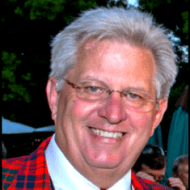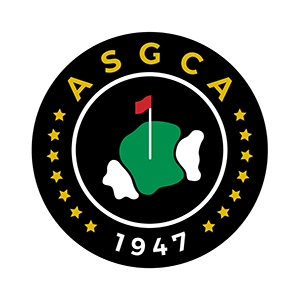Lester George, based in Richmond Virginia, designed Kinloch Golf Club, in Manakin Sabot, Virginia, and other home state  courses such as The Colonial Golf Course in Williamsburg and Captain’s Cove Golf Club in Greenbackville. George also created Newport Bay at Ocean City Golf and Yacht Club in Berlin, Maryland. He completely renovated The Old White Course at The Greenbrier in White Sulphur Springs, West Virginia; the DuPont Country Club’s DuPont Course in Wilmington, Delaware; and The Country Club of Florida, in Village of Golf, Florida. He’s successfully transformed two brownfields into golf courses, converting overgrown hazardous areas into plush, green, recreational turf. Among several other First Tee courses, Lester designed The First Tee Chesterfield, the premiere eighteen-hole First Tee course in the United States, and The First Tee Richmond (a brownfield site).
courses such as The Colonial Golf Course in Williamsburg and Captain’s Cove Golf Club in Greenbackville. George also created Newport Bay at Ocean City Golf and Yacht Club in Berlin, Maryland. He completely renovated The Old White Course at The Greenbrier in White Sulphur Springs, West Virginia; the DuPont Country Club’s DuPont Course in Wilmington, Delaware; and The Country Club of Florida, in Village of Golf, Florida. He’s successfully transformed two brownfields into golf courses, converting overgrown hazardous areas into plush, green, recreational turf. Among several other First Tee courses, Lester designed The First Tee Chesterfield, the premiere eighteen-hole First Tee course in the United States, and The First Tee Richmond (a brownfield site).
I was thirty-five years old and had previously owned a timber company, so I was familiar with all aspect of felling trees. I was out with two others in the process of clearing on a new golf course site. I was removing the stump from a large tree that had already been felled, and suddenly I heard a loud ‘crack!’ The tree swung around and struck my leg. My leg had very nearly been completely severed by the tree trunk, hitting right above the boot-line. Both lower leg bones were literally sticking out of my leg. I was losing a lot of blood, and knew I was in dire straights!
The two men with me quickly left to get help, so I was out there, by myself, waiting. Lots of thoughts and emotions went through my mind. How could this happen now? Sitting on the golf course alone, I suddenly realized, that I was mortal, and that I might lose my leg, and with the loss of blood, maybe even my life.
Because of the extreme conditions of the site, it took almost two hours for the ambulance to get to me. Over the course of that time, I had splinted my own leg, and was in so much pain I could barely remain conscious. Once in the ambulance, the paramedics knew I’d be going right into surgery, so I couldn’t be given anything that would thin my blood. The ambulance even got stuck in the mud on the site at one stage, spinning its wheels until the other fellows pushed it out with a bulldozer. Every little bump in that ambulance caused unimaginable pain, but I was doing what I could to help direct them to get the ambulance unstuck. Time was of the essence in my situation!
When we arrived at the hospital, the pain was absolutely excruciating. The doctor told me my leg was shattered, and that he would try to save it by installing a series of plates and screws. He also had to continuously flush the wound because gangrene had started to set in. Because of the loss of blood, gangrene, and the severity of the fracture, he said the possibility existed that he may have to remove my leg altogether.
I was in such serious shock that I threatened the doctor.
“If I wake up without a leg, we are going to have a serious problem,” I warned him. “You wake me up before you make a decision like that.”
I will never forget the feeling when I woke up from surgery and saw that the doctor indeed was able to save my leg. I cried tears of joy.
I was in the hospital for five days, and it took me an entire year to walk without the use of crutches or a cane. It had been such a gruesome experience. After that happened, it made me realize how short and precious life is, and that we must make the most of everyday we are given.
You never quite know what other surprises await you on a course site until you actually get there and start working.
My company had just started shaping a golf course at Langley Air Force Base near Hampton, Virginia. Langley Air Force Base is the first military base built in the United States specifically for air power, having been acquired by the fledgling Aviation Section of the U.S. Army Signal Corps in December 1916. It is home to the First Fighter Wing and the Air Combat Command. However, when we started to work on the golf course there, we had no idea just how much history we were going to encounter.
A shaper was starting to install bunkers on one of the fairways when we discovered our first piece of history – a very large piece of history: a seventy-five-pound bomb that was left over from as early as World War I! The bomb, we later learned, still had a fuse on it and could possibly detonate.
We found several more large bombs at the site, and every time we did, we had to stop work to call in the appropriate authorities to remove them. Finally, our crew had had enough. We couldn’t work in those conditions, nor did the Air Force want us to. Ultimately, the Air Force employed highly sophisticated ultra-sound type sensor to x-ray the site to look for other ‘anomalies.’ They hoped the results would help to identify the locations of any more bombs. They could then dispose of them so we could get this course built.
The results showed 16,250 anomalies, including two 500-pound bombs from the Vietnam War era! Bombs that significant damage radius and would have destroyed everything within a few hundred yards if they’d been accidentally detonated!
It took two years and almost $3-million, but they finally safely cleared all of the bombs from the land and the course is now open.
